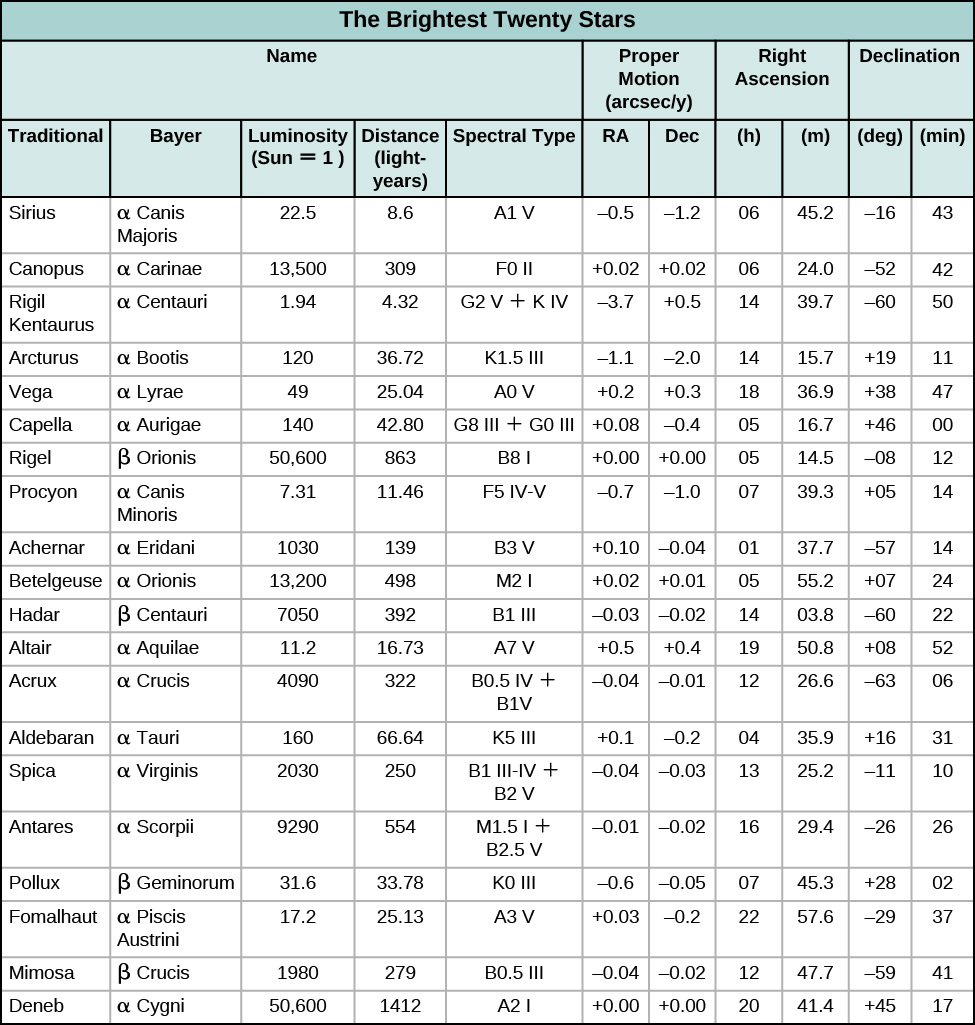Appendix J: The Brightest Twenty Stars

Note: These are the stars that appear the brightest visually, as seen from our vantage point on Earth. They are not necessarily the stars that are intrinsically the most luminous.

Note: These are the stars that appear the brightest visually, as seen from our vantage point on Earth. They are not necessarily the stars that are intrinsically the most luminous.